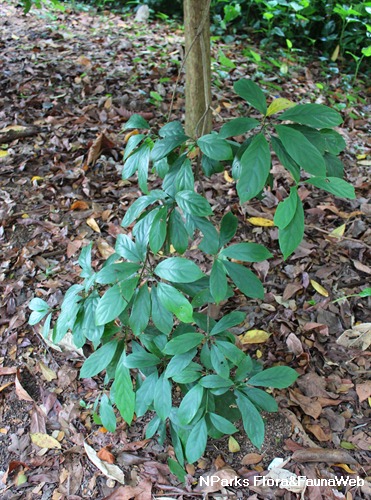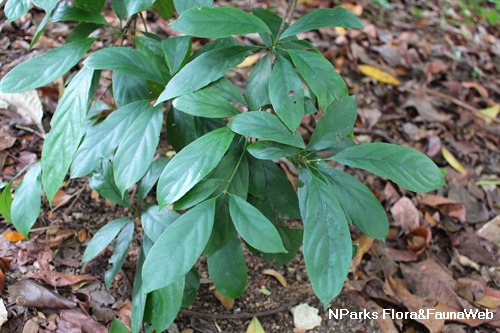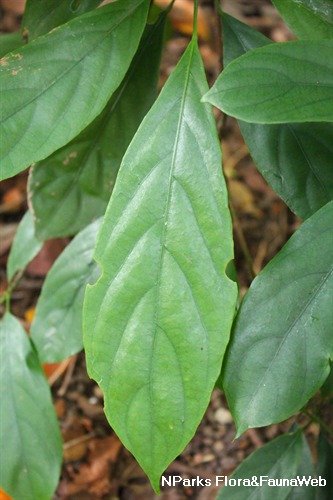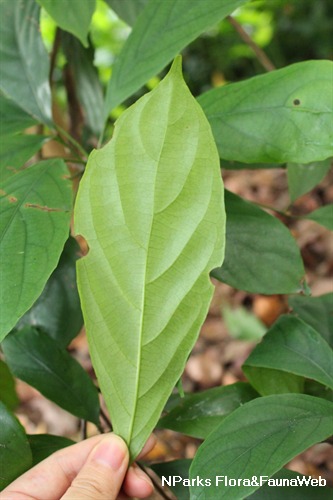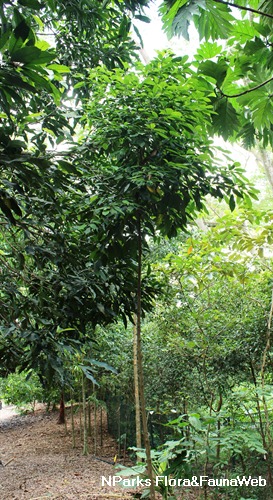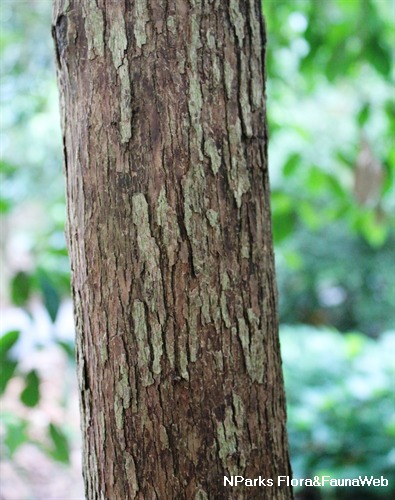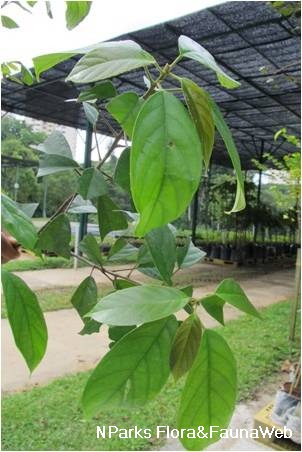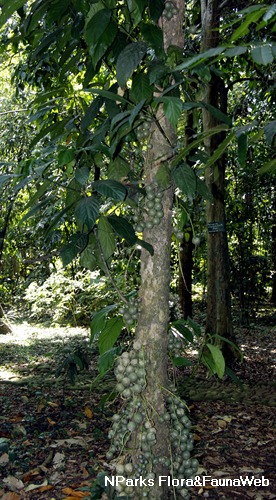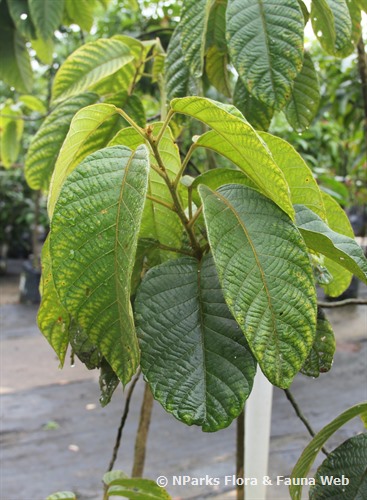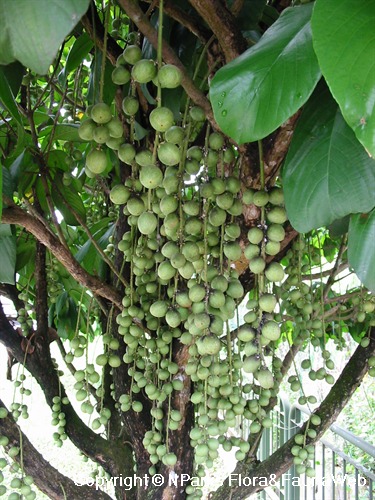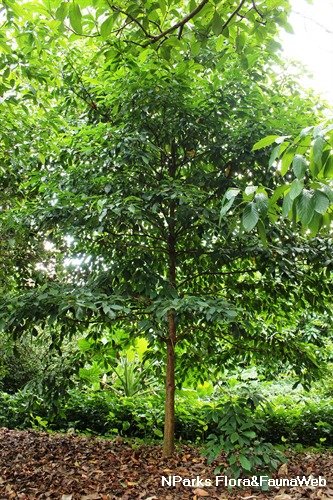
Back
Baccaurea ramiflora Lour.
| Family Name: | Phyllanthaceae |
| Synonyms: | Baccaurea cauliflora, Baccaurea oxycarpa, Baccaurea sapida, Baccaurea wrayi |
| Common Name: | Latka, Burmese Grape, Kataphal, Mafai, Tampoi, 木奶果 |
Name
Classifications and Characteristics
| Plant Division | Angiosperms (Flowering Seed Plants) (Dicotyledon) |
|---|---|
| Plant Growth Form | Tree (Medium (16m-30m)) |
| Lifespan (in Singapore) | Perennial |
| Mode of Nutrition | Autotrophic |
Biogeography
| Native Distribution | From India to southern China, Indochina, Peninsular Malaysia |
|---|---|
| Native Habitat | Terrestrial (Primary Rainforest, Secondary Rainforest) |
| Preferred Climate Zone | Tropical |
Description and Ethnobotany
| Growth Form | A medium sized tree up to 25 m tall. |
|---|---|
| Foliage | Leaves are papery, oblong to obovate-oblong, measuring 9-18 cm long and 3-8 cm wide. Adaxial (upper) surface of leaf is green and abaxially (lower) surface is yellowish-green. The base of leaf is cuneate. |
| Flowers | Flowers are small, borne in clusters on old branches or trunk. The male inflorescence is about 15 cm long, while the female one can reach up to 35 cm long. Flowers are yellowish-white. |
| Fruit | Fruits are ovoid or subglobose, about 2.5 cm in diameter, reddish-yellow or purple when mature. |
| Habitat | In primary or secondary evergreen forests up to 1700 m altitude. Found on sandy and granite soils. |
| Associated Fauna | Flowers are insect-pollinated. Fruits are consumed by mammals which disperse the seeds. |
| Etymology | Latin bacca, berry; Latin aurea, golden, indicates the golden color of the berries. |
| Ethnobotanical Uses | Edible Plant Parts : Edible Fruits Food (Fruit or Vegetable): The yellow aril can be eaten fresh, tasted sour and sweet. |
Landscaping Features
| Desirable Plant Features | Ornamental Fruits |
|---|---|
| Landscape Uses | Parks & Gardens |
| Thematic Landscaping | Economic Garden |
Fauna, Pollination and Dispersal
| Pollination Method(s) | Biotic (Fauna) |
|---|---|
| Seed or Spore Dispersal | Biotic (Fauna) |
Plant Care and Propagation
| Light Preference | Full Sun |
|---|---|
| Water Preference | Moderate Water |
| Plant Growth Rate | Moderate |
| Rootzone Tolerance | Moist Soils, Well-Drained Soils, Fertile Loamy Soils |
| Propagation Method | Seed, Air-Layering |
Foliar
| Foliage Retention | Evergreen |
|---|---|
| Mature Foliage Colour(s) | Green |
| Mature Foliage Texture(s) | Papery |
| Foliar Type | Simple / Unifoliate |
Floral (Angiosperm)
| Flower & Plant Sexuality | Unisexual Flowers , Dioecious |
| Flower Colour(s) | Cream / Off-White, Yellow / Golden |
|---|
| Flower Grouping | Cluster / Inflorescence |
Fruit, Seed and Spore
| Mature Fruit Colour(s) | Purple, Yellow / Golden |
|---|
Image Repository
Others
| Master ID | 29286 |
|---|---|
| Species ID | 3595 |
| Flora Disclaimer | The information in this website has been compiled from reliable sources, such as reference works on medicinal plants. It is not a substitute for medical advice or treatment and NParks does not purport to provide any medical advice. Readers should always consult his/her physician before using or consuming a plant for medicinal purposes. |

